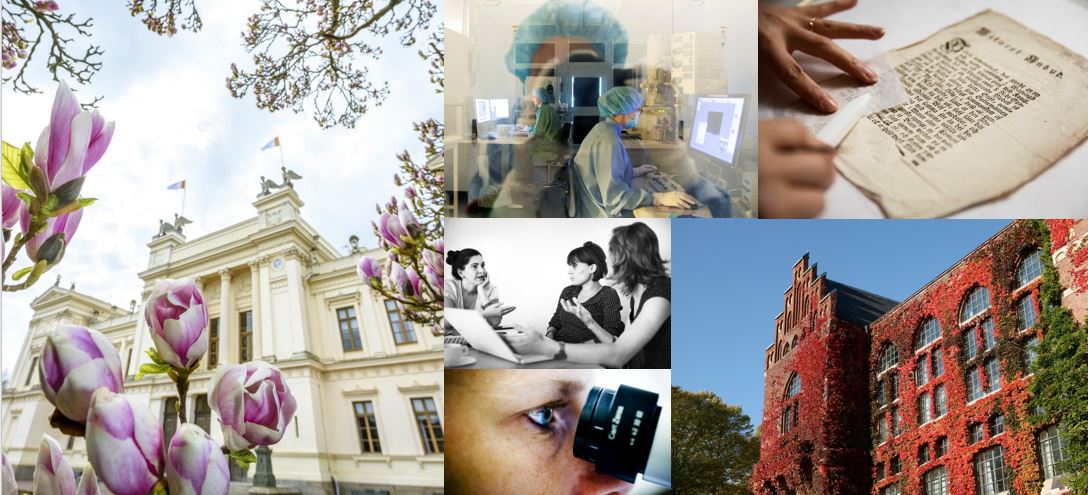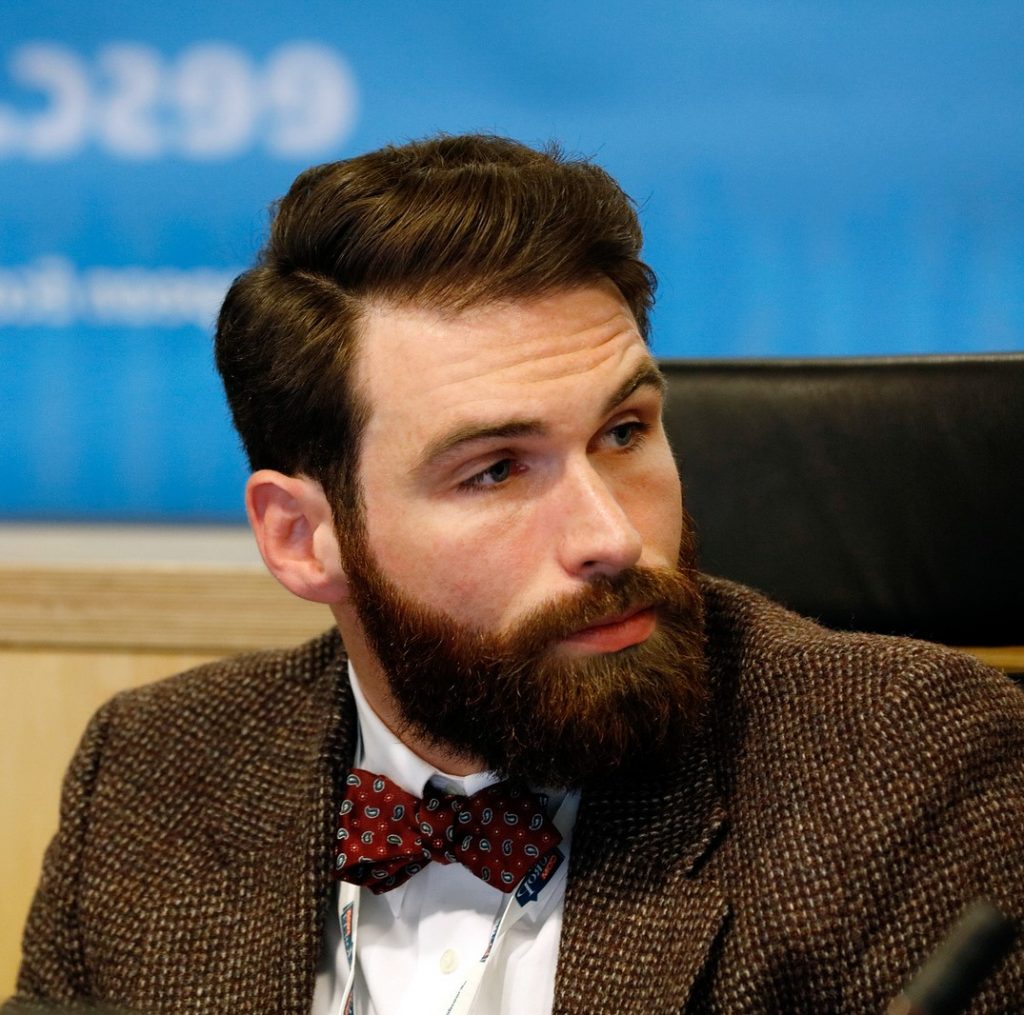Ornis Svecica is one of many scientific and scholarly journals hosted at Lund University’s open journal platform, Open Journals at Lund University (OJLU). OJLU is based on the Open Journal Systems (OJS) software and provides a technical space for managing and publishing electronic journals. The journal publishes contributions from both professionals and laymen in the field of ornithology. Since 2019 it has been published openly accessible to anyone, with no cost to either author or reader, a publishing model often called “diamond open access”.
We talked to Managing Editor Martin Stervander and Associate Editor Åke Lindström about the journal and their mission to study birds in Sweden.
Magnus: Could you tell us about Ornis Svecica?
Martin: Our publisher BirdLife Sweden (the Swedish Ornithological Society) used to publish all manner of texts, from “lighter” texts to research reports in a publication called “Vår Fågelvärld”. In the early 90s the publications were split into one glossy type of magazine with easily digested popular texts, and another which contained more serious research papers. The latter became Ornis Svecica, which is the Latin name for “the Swedish Bird”.
Ornis Svecica is a peer-reviewed scientific journal, but what makes us stand out somewhat is that, because of our historical background and the connection with BirdLife Sweden, we have authors who are laypeople, amateur ornithologists and interested people from the general public, in addition to academic researchers. This means that the editorial staff are generally more involved in the submissions than in journals that only accept papers from academics.
Åke: Within ornithology there are so many competent and dedicated laypeople who are doing great work with observing and so on, but who aren’t necessarily trained in the academic field. Therefore, it’s great to be able to help them publish their findings. Our ambition is not to be a high impact international journal, but to publish important findings of all kinds, for instance more descriptive works and datasets.
It is also likely important to our younger academics who are involved in the editorial staff and as peer reviewers, it’s a valuable experience.
Magnus: How did you end up moving your journal to our OJS platform, Open Journals at Lund University?
Martin: The journal was printed until 2018, when it was time for a renewal. We needed to go digital to reach a new and broader readership and authorship. Our ambition was to find a solution that would make the journal easily accessible and discoverable for readers and authors.
One important condition was that it would be budget friendly. We imagined that any commercial actor would probably want money from us to publish, rather than the other way around, so we looked for some type of open-source solution. Using Lund University’s OJS platform is free of cost, but we should note that it still takes resources for us to publish the journal. Previously the production of the printed volumes was done by a contractor, but the digital production also takes time, so it’s not entirely free of cost to publish digitally, but the platform is free.
Magnus: What is your opinion on the OJS platform, is it working well for you?
Martin: We are happy that we don’t have to run the technical platform on our own. We have noted that some similar journals in other countries have had to solve this problem on their own, and often the results are not as good as when using OJS. In general, it works and does what we need. We can manage the whole editorial process in this one system. There are, however, some bugs and unintuitive functions that we and our authors must live with, unfortunately.
One thing this system makes it easy to do, is to retrieve and manage digital object identifiers (DOI). In 2022 this is a basic requirement in scientific publishing, so that integration is very valuable to us.
We check on the usage statistics from time to time, and we’ve noted a steady increase in the readership of the journal. It’s been almost astonishing to see how often our papers are used, we have also noted that the older papers are reaching new readers as well. This is a metric not usually available in print publishing, and an encouraging one for us and our authors.
Magnus: None of the journals hosted on the OJS platform are financed by author charges (APCs), which otherwise have become a standard model for open access-publishing. How did this arrangement come about for your journal?
Martin: It was an obvious decision for us, given our profile, that we would not charge the authors. This decision stems from the fact that we are directed towards authors outside of academia who are already doing significant work on a voluntary basis, and also to the members of Birdlife Sweden. Besides, the researchers do not really appreciate having to pay to publish either. So, given the publishers intentions and our profile, this model is the only reasonable one for us. We do not want to put our articles behind a paywall, and we definitely cannot charge our authors.
Magnus: Do you think your model could be successful for other journals, for instance more traditional ones directed towards researchers only?
Åke: I haven’t thought about it before, but it should be possible, because in essence the editorial staff are doing the same work as we would do with more ground-breaking articles. Sometimes perhaps even more so, since doing editorial work with non-professionals’ submissions can be more time consuming. We often help these authors to structure the papers. In a way it’s easier to work with experienced scientific researchers, their submissions do not need as much editorial work, in general. Still, the financial compensation, which is none, for peer reviewing is the same whether I do it for Science or for Ornis Svecica.
Magnus: Besides publishing articles by non-academics, the public also plays a role in data collection for many of your papers.
Åke: Yes, we regularly publish papers built on data collected by the general public. You could absolutely say that we utilise a type of citizen science, similar to what’s being done in the field of astronomy with identifying celestial bodies, where people are asked to report their findings using forms designed according to strict criteria. That way we get reliable scientific data. It’s a challenge to verify that everything is correct, but it works. It’s also a way for many amateur ornithologists to do something extra with their interest in birds. It provides a further purpose.
This coordinated way of collecting data from birdwatchers from around the country is an important part of our mission to study birds in Sweden. The data is used for advanced analyses and statistics that are sent to The Swedish Environmental Protection Agency, and some of it also gets further analysed in scientific papers and then published in Ornis Svecica.
You can access Ornis Svecica here: https://journals.lub.lu.se/os/. All journals hosted at the OJLU platform are available here: https://journals.lub.lu.se.






Comments